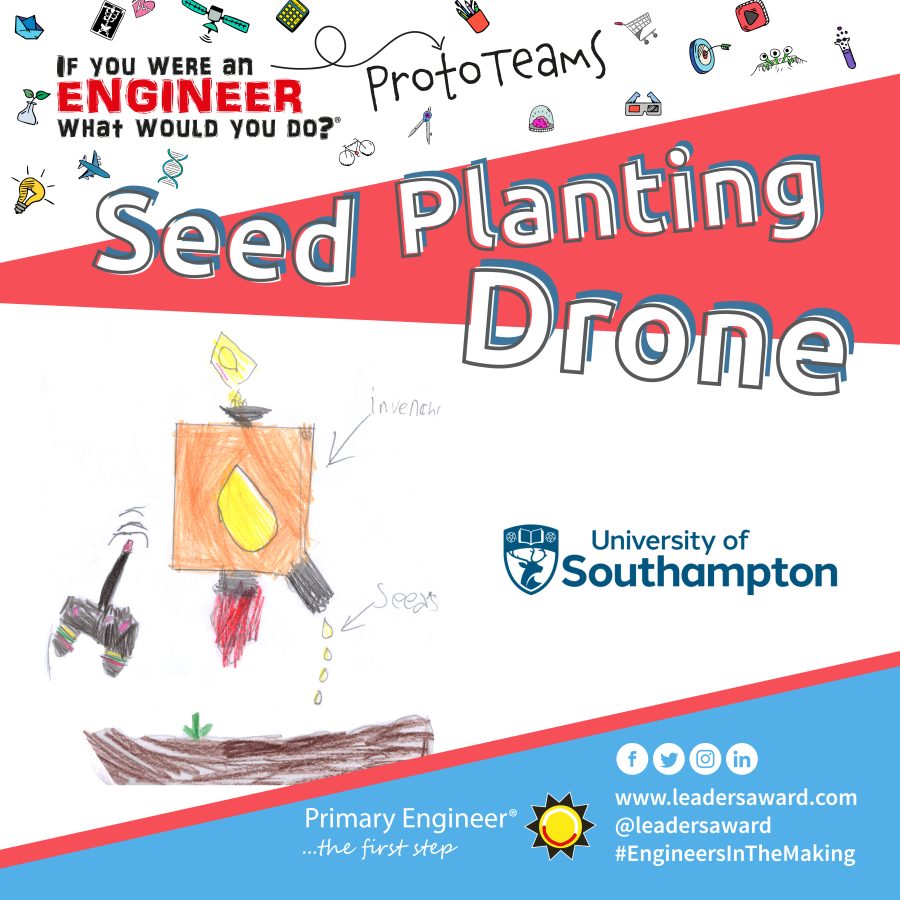
University of Southampton creating the Seed Planting Drone
University of Southampton will turn Year 2 pupil Emily’s Seed Planting Drone idea into reality for their prototype build as part of a continued partnership between University of Southampton and Primary Engineer.
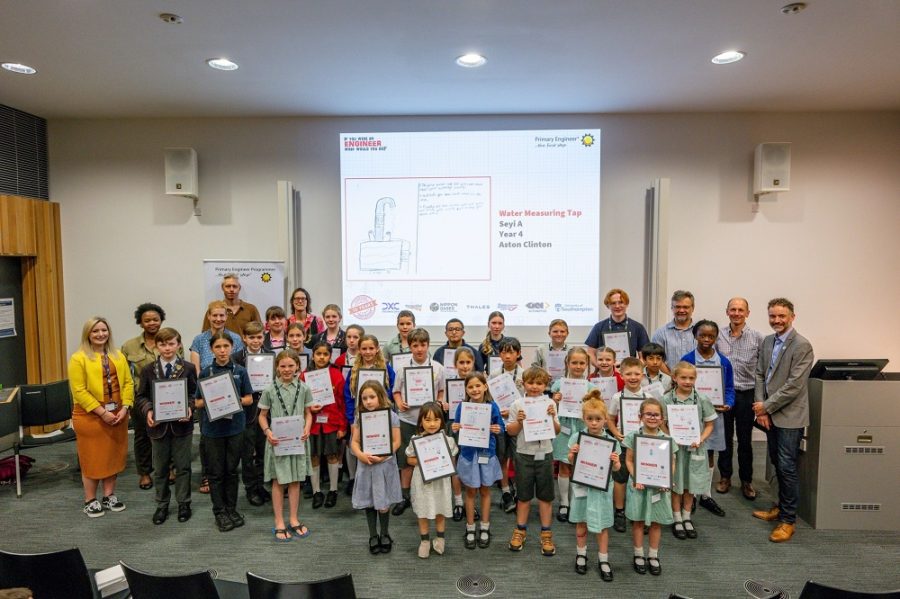
University of Southampton are a University Prototyping Partner for South England as part of our annual engineering competition which asks pupils aged 3-19 ‘If you were an engineer what would you do?’ and encourages pupils come up with creative solutions to real-world problems.
University of Southampton have selected his design to turn into a prototype over the 2023/2024 academic year which will be unveiled at the next South England Awards Ceremony and Public Exhibition during the Summer term.
They chose this design because it addressing biodiversity and soil condition through suitable planting is difficult in some places, until planting can improve soil condition and (re-)introduce native plants, encouraging further insects and animals.
Travelling over land is also difficult and so proposing a drone which dispenses seeds in a controlled way (one by one as Emily says) from the air, could be more efficient than manual planting and cover land which is difficult to access.
Considering not having to refill the seeds for one day is also an important suggestion, so there is less need to stop planting and take time to refill.
There are worthwhile engineering challenges in understanding the situations where seed planting is needed – not likely to be planted by other methods – and to design a suitable device to efficiently automate the planting
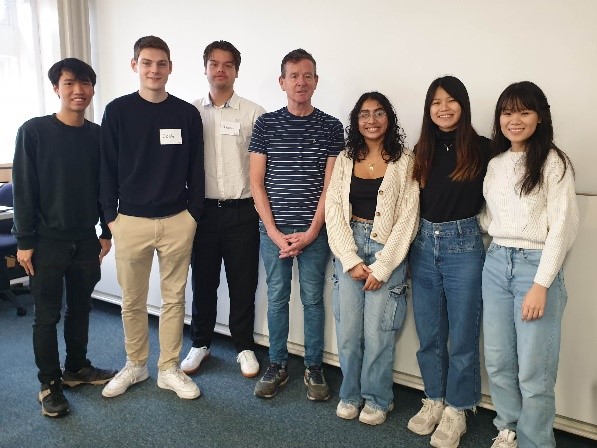
Beginning the prototype
The University of Southampton School of Engineering offers challenging Group Design Projects to final year undergraduate students.
Six students decided to pursue the design of an automated seed planting robot, inspired by the ‘Seed Planting Drone’ concept: J Kee Kok (Mechanical Engineering), Kang Jie Lee (Mechanical Engineering), Jan Patel (Civil Engineering), Josh Pinker (Mechanical Engineering), Josh Shearing (Mechanical Engineering), Ser Lin Ung (Mechanical Engineering).
Lee had relevant experience working with Aldermoor Community Farm in designing a rainwater harvesting system, and he also had an interest in make a robot suitable to enhance the environment.
The GDP team’s initial approach was to understand the benefits of planting to enhance soil condition and biodiversity through researching existing technology and interviewing academics, local councillors (picture with Councillor Steve Leggett) and those working on two local community farms.
They began also with sketching design ideas for holding and planting seeds, realising that different seeds are more likely to grow if the seeds are sown at different depths. Although in a few areas in the world, seeds can be scattered from the air (as Emily imagined), many seeds would need to be inserted into a hole or furrow in the soil using a ground-based vehicle.
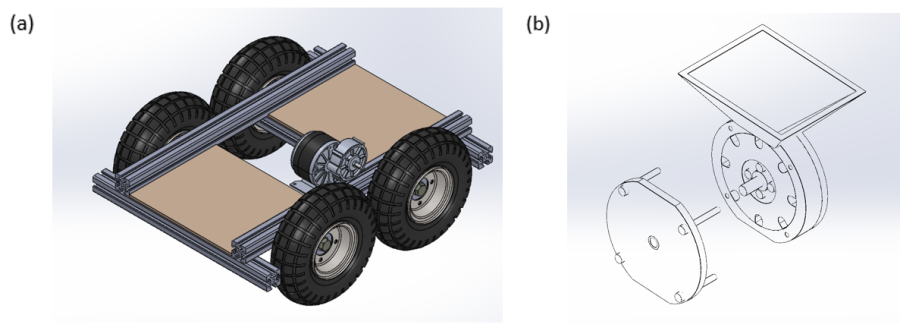
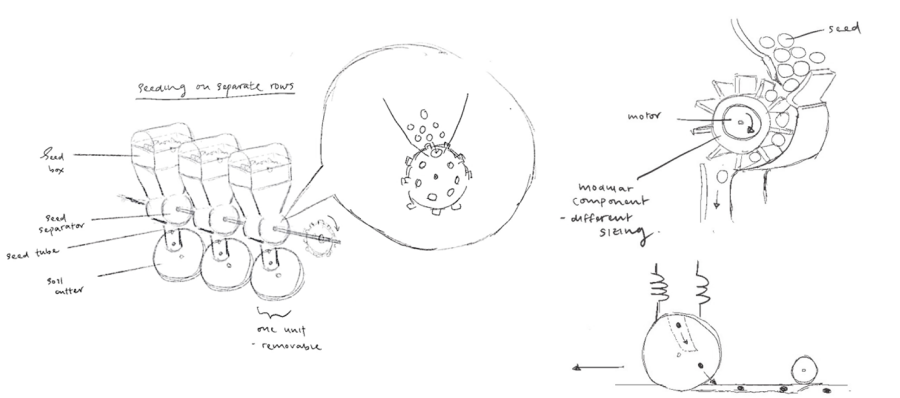
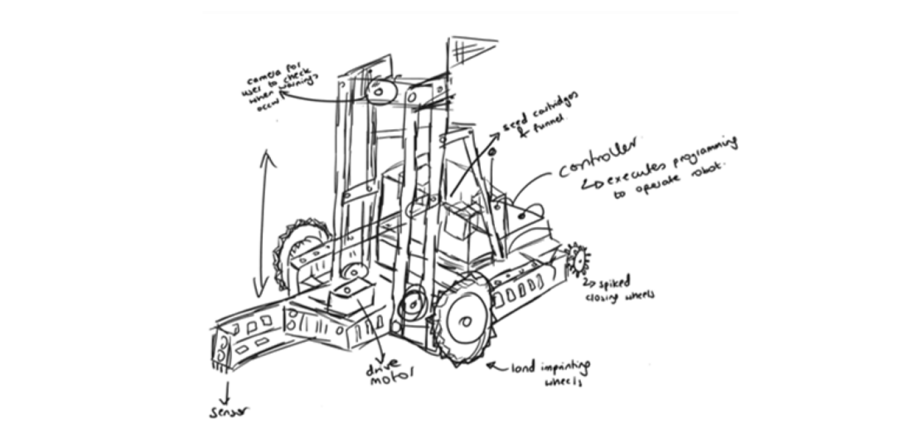
The initial concepts compare different systems for counting out a range of seeds to plant them in a spacing apart that suits their growth and leaving soil covering them at a suitable depth.
The team plans to test some of the options using Discrete Element Modelling, Finite Element Analysis (stress analysis), and Solidworks (CAD) motion studies. In addition, there will be some Fused Deposition Modelling prototypes manufactured to see which designs work best. Once all these steps are complete the full seed-dispensing / planting system will be manufactured.
The team hope to visit Emily and her class at James C E Primary Academy to discuss their ideas and how they are addressing the challenges of the project, as part of their learning towards becoming a professional engineer.
We can’t wait for the next update on this prototype.
